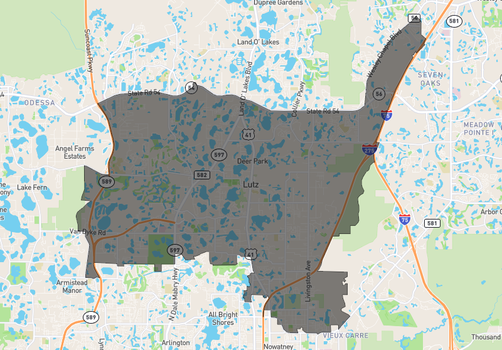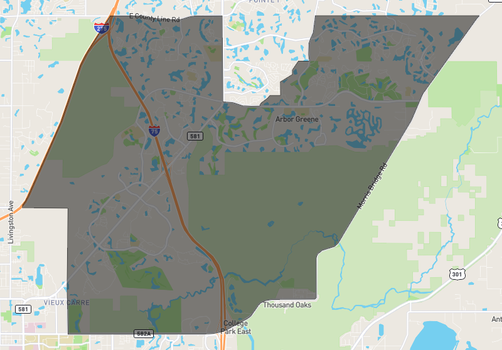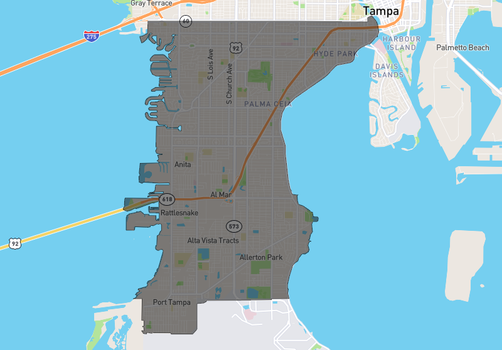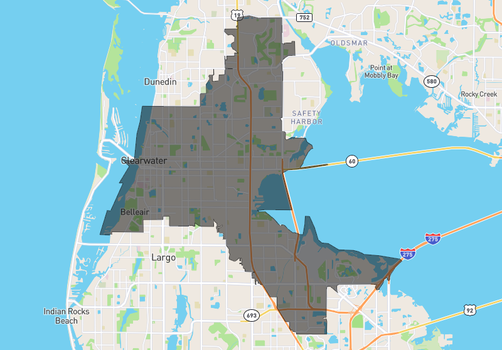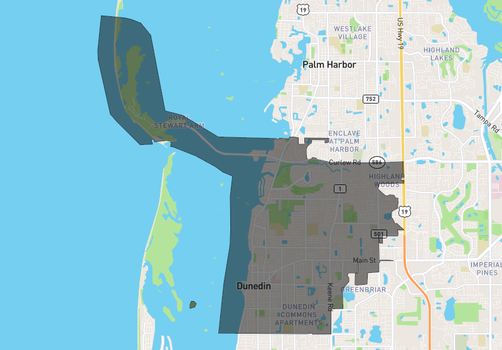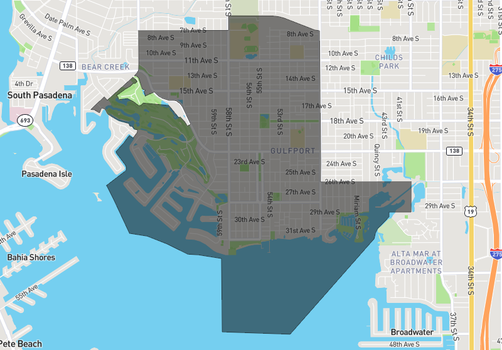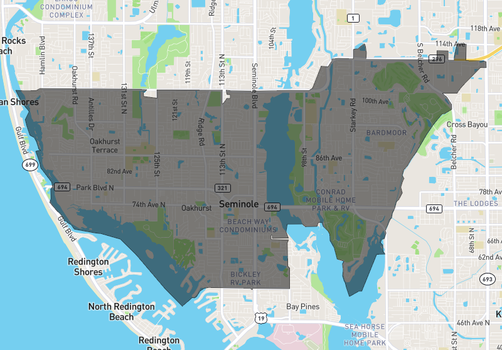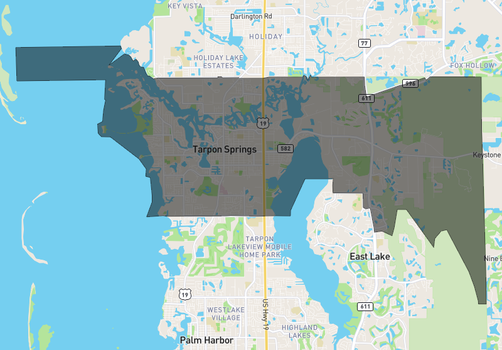~ 5 min read
Inflation Pressures from Tariffs
Tariffs act like a tax on imported goods, and companies often pass those higher costs to consumers. However foreign competitors will attempt to shave their prices as much as possible to still be competitive. As a result, the new tariffs announced on China, Mexico, Europe, and others in 2025 are expected to push inflation upward. Economists estimate that broad 10–25% tariffs on major trade partners could add on the order of a few tenths of a percent to U.S. inflation. For example, Federal Reserve researchers find that a 10% increase in trade costs for many goods can raise consumer price inflation by roughly 0.5–0.8 percentage points in the short term. In early 2025, consumer prices were already climbing as businesses and shoppers braced for tariffs – one analysis noted U.S. households would face an average $800–$1,000 per year in added costs from these tariffs. Several categories are seeing notable price impacts:
- Consumer Goods: Tariffs on China and Europe make everyday products more expensive. In the 2018 trade war, targeted goods like washing machines saw sharp price hikes. Now, with broader tariffs (e.g. a 10%–20% duty on all Chinese imports and 25% on European goods), many items from electronics to clothing face higher price tags. One Federal Reserve study confirms prices of final consumer goods jump more initially (about +0.5% for a 10% cost shock), meaning shoppers will feel it quickly. Retailers may try to find alternate suppliers, but switching is difficult for unique products, so costs get passed through.
- Construction Materials: Housing-related materials are heavily affected. Over 70% of U.S. softwood lumber and drywall (gypsum) is imported from Canada and Mexico. With a 25% tariff on those imports, building and renovation costs are rising fast. (Notably, there was already a ~15% duty on Canadian lumber; the new tariff adds to that.) Homebuilders warn that lumber, steel, and aluminum tariffs “might make housing less affordable” as material costs spike. Builders even report shortages as companies rush to stockpile supplies before tariffs hit, driving prices up even before the tariff takes effect.
- Autos and Appliances: The auto industry is seeing significant cost increases. Most U.S. automakers rely on Canada and Mexico for 20–60% of their components and vehicles, so a 25% tariff there raises production costs dramatically. S&P analysts estimate tariffs could add roughly $6,000+ to the cost of an imported car or truck, and much of that is passed to consumers. Likewise, appliances and electronics (many imported from China or Europe) face higher prices. These big-ticket items in the Consumer Price Index will contribute to overall inflation.
- Food and Household Items: Grocery bills are likely to climb. The U.S. imports large shares of fruits, vegetables, and alcoholic beverages from Mexico. With new tariffs, items like tomatoes, avocados, and wine/beer from abroad become pricier, and supermarkets may raise prices. Consumers will notice higher costs in food and beverage aisles, adding to inflation in essentials. Everyday household goods from China (furniture, textiles, etc.) hit by a 10–20% tariff will also see price bumps.
Overall, tariff-driven inflation is broad but moderate so far, on the order of a few percentage points for specific goods and a few tenths of a point on headline CPI. However, the risk is that these price increases could persist. If tariffs hit intermediate inputs (parts and materials), they not only cause one-time price jumps but also reduce manufacturing efficiency, creating more persistent inflation over time. This means inflation may stay elevated into 2026 if tariffs remain, complicating the economic outlook.
Interest Rates and Fed Policy Response
The Federal Reserve must balance these inflationary pressures against overall economic conditions. Tariff-driven inflation poses a dilemma: it acts like a supply shock – raising prices while potentially slowing growth. Historically, the Fed sometimes “looked through” one-time tariff effects. In 2018, when tariffs on Chinese goods caused specific price upticks, the Fed did not overreact because overall inflation was low and growth was soft. But 2025 is a different environment – inflation has been running above the Fed’s 2% target for several years, so the Fed is much less comfortable accommodating any extra price increases. Likely Fed Reaction: Policymakers have signaled they do not intend to raise rates purely due to tariffs, since a tariff is a tax that might only temporarily boost prices. A one-time price level jump isn’t the same as ongoing inflation. That said, the Fed also doesn’t want inflation expectations to rise. Thus, the consensus is that the Fed will pause or slow its planned interest rate cuts, keeping rates higher for longer than they otherwise would. In fact, Redfin’s economists note that while the Fed is unlikely to hike in direct response to tariffs, officials will be “more reluctant to continue their cutting cycle” if broad tariffs are imposed while inflation is already elevated. Essentially, any plans to ease monetary policy in 2025 (to support growth) may be put on hold until the inflation impact of tariffs is clearer. Bond Market Dynamics: Much of the effect on longer-term interest rates (like mortgage rates) will depend on investor reactions. Financial markets had partly anticipated Trump’s return and tariff policies, and some of this was “priced in” to bond yields. If the actual tariffs are worse than expected, markets could push yields higher on fears of inflation and larger federal deficits (tariffs can act as a tax increase). On the other hand, if tariffs start visibly slowing the economy, we might see a “flight to quality” that pushes long-term Treasury yields down. So far, the net effect has been to keep borrowing rates elevated. Mortgage rates, which closely track the 10-year Treasury, have stopped falling and even ticked up on tariff news, as investors bet on higher inflation lingering. The upshot is interest rates are likely to remain relatively high through 2025, compared to a scenario with no tariffs. Any hopes of rate relief for borrowers (including homebuyers) are delayed unless inflation quickly retreats or the Fed decides growth is faltering badly. It’s worth noting the Fed’s difficult balance if a stagflation scenario emerges. In a worst-case scenario – tariffs entrench higher inflation while also undermining growth – the Fed would face a tough choice. Chasing inflation with rate hikes could further slow growth, but easing policy to aid growth could let inflation stay above target. For now, the base case is the Fed holds rates steady. If later in 2025 the economy noticeably weakens (rising unemployment, falling demand) and inflation looks to be a one-time bump, the Fed might cautiously cut rates. But any such move will likely come later than it would have in the absence of tariffs. In summary, tariff policies are tilting the Fed toward a “higher for longer” stance on interest rates, which directly impacts mortgage costs and business financing costs across the economy.
Housing Market and Home Prices
The housing market sits at the intersection of these tariff impacts – influenced by inflation, interest rates, and construction costs. Home prices from Q2 2025 onward will be shaped by two opposing forces:
- Softening Demand – High mortgage rates and economic uncertainty are cooling buyer demand.
- Constraining Supply – Expensive building materials and still-limited inventory support home prices by limiting new supply.
On the demand side, affordability is the big challenge. Mortgage rates have jumped compared to a year ago, largely because of higher inflation and the Fed’s tighter stance. By mid-2025, 30-year mortgage rates are hovering around multi-year highs, and this directly reduces what buyers can afford monthly. For example, a 1% increase in mortgage rates can cut a buyer’s maximum purchase budget by 10% or more. With rates staying elevated due to tariffs and inflation, many first-time buyers are priced out or choosing to wait. Higher consumer prices for goods and gas also eat into budgets that might have gone towards down payments. If the tariffs and related inflation persist, household finances will be strained, likely dampening housing demand. Realtors are reporting fewer bidding wars and longer listing times in some markets as the pool of qualified buyers shrinks. Demand could weaken further if the broader economy slows. Housing is highly sensitive to job security and income growth. Should tariff-driven layoffs occur in manufacturing or export industries, or if GDP growth dips (as discussed below), consumer confidence in making large purchases like homes will fall. Already by early 2025, consumer sentiment has taken a hit (with tariffs cited as a major worry). If that anxiety persists, families may postpone homebuying plans. Housing demand would weaken significantly if there is notable labor market deterioration later in the year. In short, the tariff situation is creating headwinds for housing demand through multiple channels: higher borrowing costs, reduced real incomes (due to inflation), and potential job market softening. On the supply side, tariffs are driving up the cost of building and maintaining homes. A substantial share of U.S. building materials is imported, especially from Canada (lumber, engineered wood) and Mexico (gypsum for drywall, fixtures). With new 25% import taxes on those, homebuilders face sharply higher input prices. The National Association of Home Builders warned that tariffs on Canadian lumber and Mexican drywall will “increase the overall cost of imported building materials,” inevitably raising construction costs. Builders have a few ways to respond, none of which bode well for supply:
- Pass Costs to Buyers: New homes could simply be sold at higher prices to offset the expensive materials. This keeps prices high, hurting affordability further (new construction that might have relieved tight supply becomes too pricey for many).
- Cut Back on Building: Some developers may delay or cancel projects if costs make margins too thin. Any slowdown in housing starts means fewer new homes coming to market, exacerbating the supply-demand imbalance. Redfin’s analysis expects tariffs to “reduce housing supply” since construction is now costlier.
- Switch Materials or Suppliers: In some cases, builders will try to source domestic lumber or alternative products. But domestic mills have limited capacity and may also raise prices given higher demand. So there’s a risk of material shortages and project delays, as noted by Florida builders when tariffs were announced.
Because of these dynamics, home prices are not likely to fall dramatically even if demand cools – tight supply puts a floor under prices. We may see a period of slower price growth or modest declines in overheated markets, but not a nationwide crash. In fact, some of the tariff costs will get “passed on to homebuyers”, as higher construction expenses translate into higher listing prices for new homes. At the same time, sellers of existing homes are also holding firm in many cases. Many homeowners have locked in low mortgage rates from prior years and are reluctant to sell (and give up those rates) unless they get a strong price. This “lock-in” effect further limits inventory on the market. So, the likely scenario through end-2025 is a housing market cooldown, not a collapse. Home price appreciation will likely slow to a crawl and could flatten in many regions. Prices might even dip slightly in areas where affordability was most stretched – for instance, high-cost coastal cities could see small declines as buyers retreat. But in more affordable or high-demand areas, prices could still inch up due to scarce supply. The tariffs add an inflationary push to housing costs (via materials) that counteracts some of the deflationary pull of weaker demand. The result may be a standoff: fewer transactions happening, buyers and sellers in a stalemate over pricing. Real estate economists have warned that the worst-case outcome for housing would be a stagflation-like mix of still-high inflation (including housing costs) and weak economic growth. Under that scenario, housing activity would slow significantly, but costs (rents, prices) remain uncomfortably high – a challenging environment especially for renters and first-time buyers.
Other Key Economic Indicators
Beyond inflation, interest rates, and housing, Trump’s tariffs influence several broader measures of economic health. Here’s a look at key indicators and what to expect for the remainder of 2025:
- GDP Growth: The tariffs are anticipated to drag on U.S. GDP growth through reduced trade and higher production costs. Multiple analyses project a hit to economic output. For example, the Peterson Institute’s modeling of the new tariffs (25% on Canada/Mexico and 10% on China) finds U.S. GDP would be about $200 billion lower cumulatively over Trump’s term than it would be otherwise. That implies a noticeable slowdown, roughly a few tenths of a percent off annual growth. The Tax Foundation similarly estimates the proposed tariffs on China, Canada, and Mexico together would cut long-run U.S. GDP by around 0.5–0.6% if fully enacted. In the near term (2025), growth is already showing signs of cooling. Business investment has been discouraged by trade policy uncertainty (a concern Fed Chair Powell noted back in 2019 as well). Exports are faltering because foreign demand is hit by retaliatory tariffs and a stronger dollar. We could see GDP growth in late 2025 fall below 2% (possibly in the 1% range, or even lower if the trade war escalates further). Some worst-case scenarios even flirt with recession risk if confidence and spending contract sharply. On the flip side, if negotiations lead to an early rollback of some tariffs, it could remove some drag on growth by late 2025. But for now, forecasts are being revised downward – the tariffs are essentially an economic headwind when the U.S. was otherwise growing modestly.
- Employment and Manufacturing: Manufacturing has been hit hardest by the tariffs, as it was during the 2018–19 trade war. The import taxes increase costs for U.S. factories that rely on foreign parts, and foreign retaliatory tariffs hurt U.S. exporters. This one-two punch is squeezing manufacturers’ margins and forcing difficult choices. In fact, the Federal Reserve found that the last round of tariffs led to a 1.4% reduction in U.S. manufacturing employment, despite the protective intent of those tariffs. We’re seeing similar patterns in 2025. Manufacturing output and new orders have dipped; surveys show factory activity contracting as trade tensions linger. Back in late 2019, the manufacturing PMI index fell to its lowest since 2009, with companies citing the trade war as a major factor. Now in 2025, manufacturers again report slumping confidence and hiring freezes. Some have even announced layoffs or reduced hours in tariff-affected industries (steel-consuming sectors, agriculture equipment makers, etc.). The Midwest and industrial regions are feeling this stress the most. Nationally, overall employment growth is slowing from its earlier pace. While the economy is still adding jobs, the monthly gains have downshifted. Sectors like warehousing, retail, and manufacturing are either flat or losing jobs in some months, partly due to higher input costs and uncertainty. One positive aspect is that tariffs, by raising prices, are generating more tariff revenue which the government might recycle (for example, farm aid or subsidies to affected industries). However, those measures only offset a fraction of lost private-sector activity. The net effect is likely a small rise in unemployment by late 2025 compared to early in the year. Economists at Peterson Institute project that the Canada/Mexico tariffs alone could cost over 200,000 full-time U.S. jobs in the long run, and initial signs suggest job losses are indeed emerging in vulnerable sectors. If the global environment weakens (China’s economy slowing, etc.), export-oriented jobs in aerospace, agriculture, and technology could also be at risk. In summary, job growth is slowing and could stall in some sectors as the tariff impact works through the economy.
- Manufacturing Sector Health: (Related to jobs above) Key manufacturing indicators are flashing warning signs. The combination of tariffs and retaliatory measures has led to shrinking export orders and higher input costs, a toxic mix for factories. Producer prices for manufacturing inputs have jumped ~4% due to tariffs, according to Fed research, which squeezes profit margins. Capital expenditures are being delayed – for instance, a factory that was considering expansion might hold off given uncertainty about future trade costs. As noted, the ISM Manufacturing Index has been trending down; if it sustains sub-50 readings (contraction territory) for several months, that typically presages broader economic weakness. So far, consumer spending and services have held up better, but if manufacturing downturn worsens, it often spills over. Some industries do benefit slightly – e.g. domestic steel producers see higher demand or prices when imports are taxed – but these gains are usually smaller than the losses elsewhere. Overall, expect the manufacturing sector to remain under strain, potentially approaching a mild recession of its own (even if the whole economy avoids one). This also shows in regional factory surveys and industrial production data, which are likely to be soft through year-end.
- Consumer Sentiment and Spending: American consumers have been a pillar of the economy, but confidence is starting to waver in the face of tariff news and price increases. By February 2025, consumer confidence indices recorded their sharpest drop in over three years, sinking to the lowest levels in about 8 months. Surveys indicate that households are growing anxious about Trump’s trade policies – tariffs were explicitly “singled out as the major issue” weighing on sentiment in recent polls. When consumers hear about rising prices and possible job cuts, they often become more cautious. Already, one in three consumers surveyed in mid-2019 mentioned tariffs when assessing the outlook, and those who did had more pessimistic expectations for the economy (higher inflation and higher unemployment). In 2025, we see a similar trend: discussions of tariffs are at their highest level since 2019 in consumer surveys. This dip in confidence could translate to slower growth in consumer spending. Big purchases that are sensitive to confidence – cars, appliances, home renovations – might be postponed. Indeed, retail analysts note a slight pullback in discretionary spending categories, potentially an early sign that households are tightening belts. However, the job market (outside of manufacturing) remains fairly solid so far, which keeps a floor under consumer spending. Wages are still rising moderately, and lower-income households benefited from some wage gains earlier in the year. These factors help, but if inflation continues to erode purchasing power and confidence remains low, consumer spending (which is about 70% of GDP) could weaken by late 2025. The holiday season at the end of 2025 will be a critical barometer – if tariffs are still in place, Americans might face noticeably higher prices on many imported gifts and goods, possibly resulting in a more muted shopping season. Consumer sentiment bears close watching; a prolonged slump in confidence can become self-fulfilling by curbing expenditures, thereby slowing the economy further.
- Global and Financial Market Effects: The tariffs don’t only affect the U.S. – global growth is also dented, which feeds back into the U.S. via financial markets. Europe, China, Mexico, and Canada are all experiencing some pain from reduced trade volumes. For instance, Mexico’s GDP could be 2% lower relative to baseline under the 25% U.S. tariff scenario, and Canada’s economy also takes a hit, potentially pushing it toward recession given its dependence on U.S. trade. China’s growth in 2025 has slowed partly due to lost U.S. export demand and supply chain shifts (though China also uses monetary and fiscal tools to offset some effects). These international ripple effects mean demand for U.S. exports is weaker, and U.S. multinational companies earn less profit abroad. Financial markets have been volatile on trade news: stocks tend to drop on days when new tariffs are announced or trade talks sour. This volatility can weigh on U.S. wealth and investment. On the flip side, if investors see the tariffs as inflationary and the Fed not cutting rates, they could push bond yields up, as mentioned, or demand higher returns to hold U.S. assets. The dollar has also strengthened at times during the trade conflict, as global investors seek safety in U.S. assets; a stronger dollar ironically makes U.S. exports less competitive, counteracting some intended effects of tariffs. In summary, the broader global and financial context is one of heightened uncertainty and cautious sentiment, which the U.S. economy will feel via slightly tighter financial conditions and softer external demand.
Florida’s Outlook vs. National Trends
Florida’s economy and housing market have some unique characteristics that shape how these tariff impacts play out locally. Here’s how Florida (and the Tampa Bay area, for example) might fare relative to the nation:
- Real Estate and Home Prices in Florida: Florida has been one of the nation’s hottest housing markets in recent years, fueled by population growth, remote-work relocations, and retiree migration. Coming into 2025, home prices in Florida (especially cities like Tampa, Orlando, and Miami) were rising faster than the national average. The tariff-induced dynamics will likely cool Florida’s housing momentum, but perhaps less severely than in some high-cost northern markets. One reason is that Florida still enjoys strong in-migration – people moving from higher-cost states may continue to support housing demand, even if higher interest rates force some budget adjustments. That said, Florida is not immune to affordability challenges. Many Florida homebuyers rely on mortgages, so the spike in rates is reducing what they can afford, just as elsewhere. We can expect fewer sales and a slower pace of price gains in Florida through end-2025. In highly sought-after areas (coastal neighborhoods, suburbs of Tampa and Miami), prices are likely to plateau rather than fall significantly, supported by ongoing demand from newcomers. However, some overheated pockets (where prices jumped 30%+ over 2021–2024) could see modest price declines as local buyers hit their affordability limit. Florida also has a robust market for second homes and vacation properties; that segment might see a sharper pullback if discretionary buyers get cold feet amid economic uncertainty. Overall, Florida’s housing market should remain resilient but cooler – likely outperforming the national average (in terms of holding value) due to its population growth, yet slower than its own recent history.
- Construction and Development: Florida has a large homebuilding and construction sector, and this is directly impacted by tariffs on materials. The cost to build a new home in Florida is climbing. Local builders point out that so much of their supplies are imported – Canadian lumber for framing and Mexican drywall for interior construction are two prime examples. As tariffs raise these costs, Florida developers face thinner profit margins on projects. Some builders may scale back speculative building. This could aggravate Florida’s housing supply shortage, since the state actually needs more homes to accommodate growth. Infrastructure projects (road, condo developments, etc.) will also get more expensive, potentially slowing down some planned investments. On the flipside, Florida’s construction industry might benefit if domestic suppliers (like U.S. lumber mills) ramp up production – there’s a sizable lumber industry in the Southeast that could try to take advantage of tariffs on Canadian wood. But in the short run, any such adjustment is limited. For Florida residents, an important consequence is that new homes, renovations, and even rent (which is influenced by construction costs for new apartments) are likely to become more expensive, putting additional pressure on the cost of living.
- Trade and Ports: Florida is a trade-intensive state, with major ports (Miami, Tampa, Jacksonville) handling large volumes of imports and exports. Tariffs on trading partners could reduce the flow of goods through these ports. For instance, Port Tampa Bay, which handles more cargo tonnage than any other Florida port, gets a large share of its imports from Canada and Mexico. If those imports drop due to the 25% tariffs, the port could see fewer ship arrivals. While the port itself doesn’t pay tariffs, it earns fees based on volume – lower volume means a hit to port revenue and related jobs. Key goods coming through Tampa include fuel and fertilizer ingredients like phosphate and limestone. Fuel coming into Florida is mostly from domestic sources, so the state’s gasoline prices might be less affected by tariffs on Canadian oil (Florida gets fuel mainly from Texas refineries, insulating it from that particular impact). However, any equipment or components for Florida’s large agricultural industry that are imported (tractors, etc.) will cost more, and that can trickle down. On the export side, Florida ships out a lot of aerospace products and agricultural goods. Retaliatory tariffs are a real concern here: if Europe, China, or Latin American partners respond by targeting U.S. exports, they might single out industries important to Florida. In fact, experts have warned that “imagine if there was a retaliatory tariff on something like citrus” – that would hit Florida especially hard. The EU has in the past threatened tariffs on Florida orange juice as a political pressure tactic. Similarly, Florida’s $10+ billion aerospace export sector could be vulnerable if trade partners aim at U.S. aircraft and parts. In short, Florida’s trade-oriented businesses and logistics sector face heightened uncertainty, with potential declines in activity if global trade flows reroute or reduce.
- Consumer Prices and Cost of Living: Floridians will experience many of the same inflation pressures described earlier, with a few local twists. Because Florida’s economy is heavily service- and tourism-oriented, the direct impact on consumer prices comes through goods that the state imports for consumption. Grocery prices in Florida could spike more than in some other regions because a huge portion of off-season produce is imported through Florida’s channels. Tariffs on Mexican produce mean items like tomatoes, strawberries, and avocados (staples in Floridian diets and restaurants) become pricier. Restaurants and hotels in tourism hubs might face higher food and supply costs, which can lead to higher menu prices or fees for tourists. Car prices are a concern too – Florida is a big car market (with lots of driving and car rentals for visitors). The estimated $6k average increase in vehicle costs from tariffs on North America will pinch Floridians, possibly slowing auto sales in the state. On a positive note, one major cost component for Floridians – fuel – might not surge due to tariffs. As noted, Florida sources gasoline domestically, and global oil prices haven’t spiked from this trade dispute (they can even soften if global growth slows). So, gas prices in Florida are expected to follow normal seasonal patterns without an extra “tariff premium”. Overall, however, Florida’s cost of living will rise modestly as tariffs filter through, keeping inflation in the state relatively high. Florida has already been experiencing above-average inflation in 2023–24 (due to housing and insurance costs); trade tariffs add another layer on top of that.
- Job Market and Industry Impacts: Florida’s job market may see less direct damage from tariffs than manufacturing-heavy states, since Florida’s economy leans more on services like tourism, healthcare, and retail. Manufacturing is a smaller slice of Florida’s jobs. This means the kind of factory layoffs happening in the Midwest might not be as pronounced in Florida. However, Florida isn’t completely off the hook. The state does have certain manufacturing and high-tech corridors (for example, aerospace manufacturing around Cape Canaveral or defense contractors in Orlando) that could suffer if exports are curtailed. Agriculture is still important in Florida (citrus, sugar, produce), and any retaliatory hit to agriculture (like tariffs on oranges or specialty crops) would hurt farm incomes and agricultural employment. Another sector to watch is tourism: while tourism isn’t directly tariffed, a slowing economy or rising costs could reduce travel. If American consumers feel squeezed by higher prices elsewhere, they might cut back on vacation spending, potentially slowing the robust recovery Florida’s tourism industry has seen. International tourism could also be affected if foreign economies weaken due to the trade war (fewer European or Canadian travelers, for instance, or a stronger dollar making U.S. trips more expensive). So far, Florida’s unemployment rate remains low, but job growth has eased slightly compared to last year. Most Florida businesses are in “wait and see” mode regarding tariffs. They’re hoping trade partners come to new agreements so that major disruptions (and retaliations) can be avoided. If the tariffs persist into late 2025, we might see Florida’s job growth slow further, with particular weakness in any export-dependent niches, while service jobs (restaurants, hospitality) could plateau if consumer spending softens. The bottom line for Florida’s economy: it’s relatively resilient due to diversification and population inflows, but it’s not immune. Tariffs create a drag that will be felt in higher costs and selective industry headwinds, potentially tempering what has been a strong growth story in the Sunshine State.
Possible Scenarios
The remainder of 2025 could unfold in a few different ways depending on policy shifts and market reactions. It’s important to consider multiple scenarios:
- Escalation/Stagflation Scenario: If trade tensions escalate further – say, tariffs are increased beyond current rates or broadened to more countries (and if trading partners retaliate in kind) – the U.S. could enter a stagflation-lite situation. In this scenario, inflation stays elevated (heading toward the upper-single digits for certain indexes) while growth slows to near zero. The Fed would face immense pressure as core inflation might not fall, keeping interest rates high just as unemployment starts to rise. Home prices in this case would likely stall or decline in many areas, as the drag from high interest rates and a weakening economy outweighs the cost-push from materials. GDP growth could flirt with recession territory in late 2025, and the unemployment rate could tick up significantly (perhaps a percentage point or more above current levels). This is the worst-case outcome policymakers hope to avoid. Signs of this scenario would include consistently rising core inflation readings each quarter and sharply lower consumer spending – prompting talk of stagflation reminiscent of the 1970s (albeit milder in magnitude). The housing market in this case might see increased delinquencies or stress in regions hit by job losses. Florida, for instance, could see a bigger hit to tourism and construction employment in a deep escalation scenario, amplifying the impacts discussed.
- Stabilization/Base Case Scenario: In a more moderate scenario, the tariffs stay in place through 2025 but do not dramatically worsen. Businesses gradually adjust by finding alternative suppliers or improving efficiency, and foreign exporters might cut prices to keep their U.S. market share (offsetting some tariff impact). Inflation would still get a boost in mid-2025 but might start to gradually ease by late 2025 as the one-time effects wash out and demand softens. The Fed, under this scenario, holds rates steady for most of 2025 and possibly begins minor rate cuts late in the year if inflation is clearly trending down and growth is lackluster. Home prices nationwide might end the year roughly flat (0% to +2% year-over-year) – essentially a soft landing for the housing market. Key economic indicators would show slower but continued growth (GDP perhaps around +1.0 to +1.5% for 2025). Unemployment might rise slightly but likely stays under, say, 5%. This base case assumes no new tariff shocks beyond those announced, and that consumers and firms begin to regain confidence as they see the economy still managing some growth. Florida in this scenario continues to grow, albeit a bit slower, and likely outperforms the national average in terms of job and population growth, helping to support its real estate market.
- De-escalation/Improvement Scenario: There’s also a chance that negotiations could yield partial trade deals or tariff relief before the end of 2025. For example, if the U.S. strikes a deal with allies (Canada, Europe) to remove or reduce the tariffs in exchange for other concessions, or if China agrees to certain measures (on fentanyl or trade practices) leading to a rollback of some tariffs – this would be a game-changer. In this optimistic scenario, many of the negative effects outlined would be mitigated in the second half of 2025. Inflation would likely fall closer to the Fed’s target as tariffs (a contributor to prices) come off; we could even see a temporary glut/discounting if backlogged goods flood in post-tariff. The Fed would have more leeway to cut interest rates to support growth, possibly restarting an easing cycle. Mortgage rates could dip, which might spur a rebound in home sales and construction activity by year-end. Confidence – both business and consumer – would likely surge on news of resolving trade disputes, leading to a pickup in investment and spending. Under this scenario, year-end 2025 could see a re-acceleration of GDP growth and a rosier outlook for 2026. Home price growth in 2025 might re-accelerate slightly in response to lower rates (though that could be a double-edged sword if it reduces affordability gains). Florida’s economy would definitely benefit here: its consumers would enjoy lower prices again, its exporters could breathe easier, and its tourism sector would thrive with improved global economic conditions. However, it’s worth noting that a sudden de-escalation is not guaranteed – it requires political will and compromise. Businesses and investors aren’t counting on this, but it remains a possible upside scenario.
From Q2 2025 to the end of the year, Trump’s tariff actions are poised to have a significant, multi-faceted impact on the U.S. economy and housing market. We anticipate some uptick in inflation (especially in goods and construction costs), a Fed that is cautious with interest rates (prioritizing inflation control over stimulus), and a housing market that cools but avoids a crash as supply constraints prop up home prices to an extent. Other indicators like GDP growth and manufacturing health are likely to show stress and slower momentum, while consumer and business sentiment remain jittery. Florida will reflect many of these national trends – higher prices and a bit less growth – but its particular economic mix (tourism, retirees, trade) will shape a unique regional outcome, with real estate holding up relatively well yet costs of living rising in key areas. Policymakers and investors will be closely watching how these tariffs play out over the next few quarters. The hope is to avoid the worst-case of entrenched inflation and stagnation, and ideally to leverage negotiations so that by 2026 the tariffs might be eased. For now, both households and businesses should brace for a bumpy economic ride in 2025, as the tariff volleys work their way through the economy. It’s a classic case of uncertainty – and in markets, uncertainty often translates to caution. All eyes will remain on trade policy developments, Fed meetings, and market reactions as we navigate the remainder of the year under these new trade barriers. Sources:
- Federal Reserve & Economic Research: Evidence on tariffs raising prices (Inflationary Effects of Trade Disputes with China - San Francisco Fed) (The Fed - How Do Trade Disruptions Affect Inflation?) and affecting manufacturing jobs (Trump tariffs led to job losses, higher prices for businesses: Fed report | Fox Business).
- Redfin Economics Research: Analysis of tariffs’ impact on inflation, rates, and housing (Chen Zhao, Jan. 2025) (The Potential Impact of Tariffs on the U.S. Housing Market) (The Potential Impact of Tariffs on the U.S. Housing Market).
- Peterson Institute for Intl. Economics (PIIE): Projected effects of Trump’s 2025 tariffs on GDP and inflation (Trump's threatened tariffs projected to damage economies of US, Canada, Mexico, and China | PIIE) (Trump's threatened tariffs projected to damage economies of US, Canada, Mexico, and China | PIIE).
- Tampa Bay Times (Feb. 2025): Florida-focused impact (ports, construction materials, autos, citrus) (What Trump’s tariffs could mean for Florida) (What Trump’s tariffs could mean for Florida).
- Reuters News: Consumer confidence and manufacturing downturn related to tariff tensions (Trump policy concerns send US consumer confidence plummeting to eight-month low | Reuters) (U.S. manufacturing dives to 10-year low as trade tensions weigh | Reuters).
- Tax Foundation: Estimated economic effects of proposed tariffs (GDP -0.5%, jobs -200k, cost per household ~$1,000) (Trump Tariffs: The Economic Impact of the Trump Trade War) (Trump Tariffs: The Economic Impact of the Trump Trade War).







